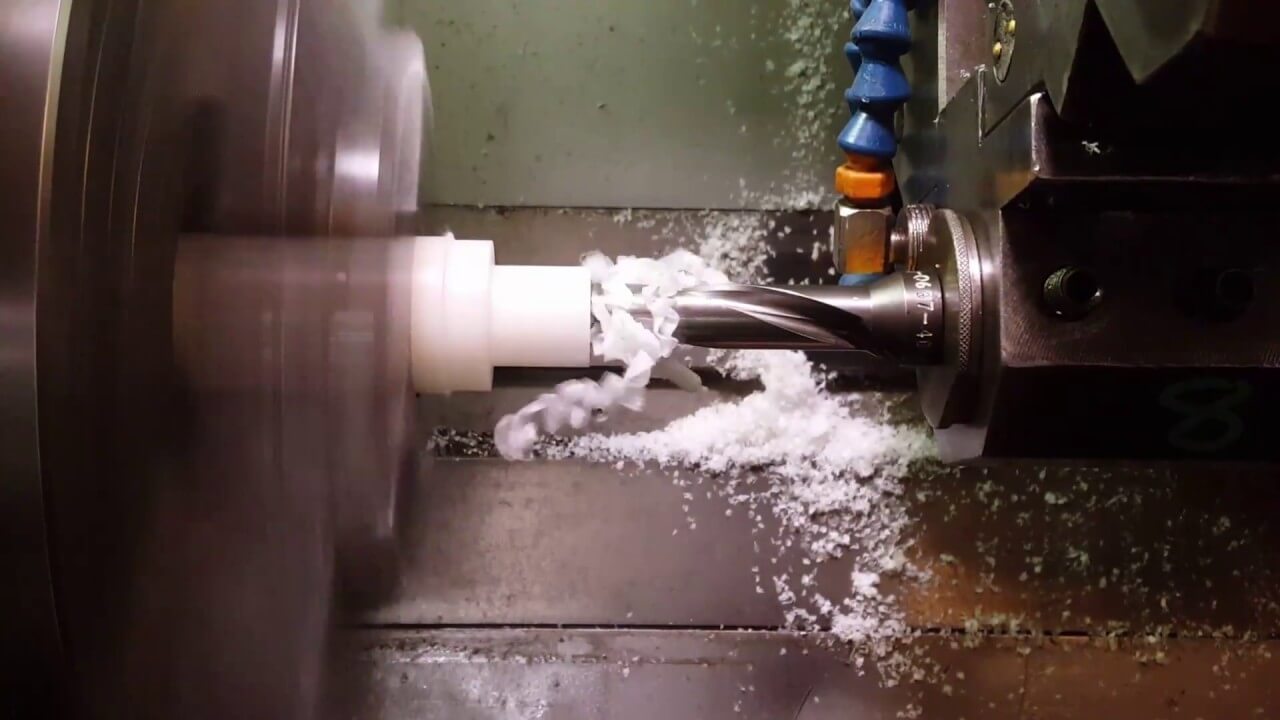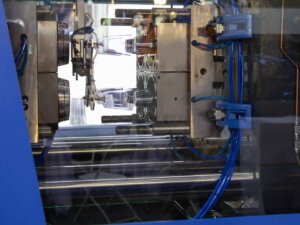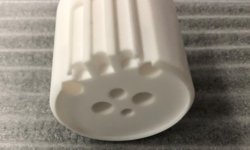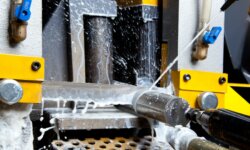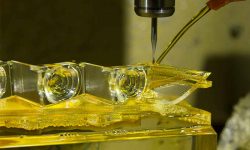From cars to consumer electronics to kitchenware, Delrin is just about everywhere: the high-strength thermoplastic makes great consumer products and is favored by machinists for its good material properties and high machinability.
This article goes over the basics of machining Delrin: what Delrin is, the benefits of machining Delrin, the limitations of machining Delrin, common applications of machining Delrin, and tips for designing and machining Delrin parts.
What is Delrin?
Polyoxymethylene (POM) is a semi-crystalline engineering thermoplastic characterized by its stiffness, excellent dimensional stability, hardness, and strength.
Also known as acetal, polyacetal, or polyformaldehyde, its most widely recognized brand name is Delrin, which is made by chemicals company DuPont. (Other brand names for POM include Kocetal, Ultraform, and Celcon.) Note that Delrin is an acetal homopolymer, but POM can also be made into a copolymer.
Although intrinsically opaque, Delrin is available in all colors. It has a density of 1.410–1.420 g/cm3 and offers rigidity to -40°C. It is 75–85% crystalline with a melting point of 175°C.
Delrin is suitable for machining processes like milling and turning, and is supplied in sheets or extruded bars for this purpose. The material can also be cut with a laser cutter, and its granulated form is used for injection molding and plastic extrusion.
Advantages of machining Delrin
Delrin is a popular engineering thermoplastic for CNC machining, both because of its material properties and its machinability. Its main advantages are:
- Machinability: Delrin is free-cutting plastic with excellent dimensional stability. This makes it easy to cut to tight tolerances.
- Strength, toughness & impact resistance: Delrin is a tough, high-strength material suitable for demanding applications.
- Resistance to moisture & chemicals: Delrin is resistant to solvents, gasoline, alcohols, and other chemicals, as well as to moisture.
- Creep resistance: Delrin has good creep resistance, making it suitable for long-life end products like automobile parts. It also offers good fatigue endurance.
- Electrical insulator: Delrin is a popular machining material in consumer electronics because of its electrical insulating properties.
- Natural lubricity: Delrin has a high level of natural lubricity and is therefore a good choice for low-friction applications where the part will come into contact with other plastic parts.
Limitations of machining Delrin
Delrin machining has some limitations that make it unsuitable for certain parts and applications. Its main limitations and weaknesses are:
- Bondability: Because of its chemical resistance, Delrin does not respond well to adhesives and is difficult to bond — although Delrin is marginally easier to bond than POM copolymers.
- Flammability: Delrin is not self-extinguishing and will burn until oxygen is eliminated. Class A extinguishers are needed to put out a POM fire.
- Heat sensitivity: Machining Delrin at too high a temperature can cause deformation. Although this is manageable, it does require attention.
Applications of Delrin machining
Machined Delrin parts can be found everywhere, from the automotive industry to consumer electronics. Some common Delrin machining applications include:
Mechanical/industrial parts
Delrin mechanical parts can include gears, housings, springs, fan wheels, valves, bearings, rollers, and scraper blades.
Electrical parts
Delrin parts for electronics applications include insulators, connectors, bobbins, connectors, and consumer electronics parts like keyboard covers.
Automotive parts
Delrin automotive parts include door lock systems, articulated shells, and fuel sender units.
Medical parts
Delrin medical parts include inhalers, insulin pens, and medical instruments.
Furniture
Delrin can be machined into furniture parts like handles, locks, hinges, and hardware.
Delrin machining tips
Delrin is widely considered to be one of the most machining-friendly plastics, so it does not require any drastic precautionary measures. That being said, it responds better to certain design considerations and machining approaches than others.
- Design for Delrin: When designing parts for Delrin machining, try to keep wall thicknesses consistent and include fillets and ribs where necessary. Large parts may be more susceptible to warping.
- Stay cool: Delrin is sensitive to temperatures above 121°C. Air-based coolants perform better than liquid coolants and also accelerate chip removal.
- Keep the tool clean: Although machined Delrin produces consistent and manageable chips, chip removal should be swift to avoid a gummy buildup on the tool.
- Keep Delrin separate: To avoid contamination, it is best to use cutting tools that have not been previously used to cut aluminum or other metals.
- Be sharp: Sharp cutting tools with a high clearance angle will deliver better results when machining Delrin, and the use of cutting lubricant may also help.
- Not too tight: Delrin is not especially rigid so care should be taken during workholding. Light clamping forces should be used at all times.
Delrin machining, Delrin 3D printing, or Delrin injection molding?
Delrin is a versatile CNC machining material and is not limited to machining project. Delrin 3D printing filament can be used to make 3D printed Delrin parts, and Delrin injection molding is also possible.
3D printing Delrin offers geometrical flexibility and is suitable for a very wide range of prototyping applications, but its limitations include poor print bed adhesion, possible delamination, and a limited temperature range.
Injection molding Delrin is suitable for larger parts and is more reliable than 3D printing. POM pellets (either Delrin or acetal copolymers) for IM are also more widely available than Delrin 3D printer filament. However, the semi-crystalline nature of Delrin can increase shrinkage of molded parts.
In general, if the desired geometry and dimensions of the Delrin part are machinable, then machining is the best option of the three.
Machining | 3D printing | Injection molding | |
Large-volume parts | Sometimes | No | Yes |
Thick-walled parts | Yes | Yes | No |
High-performance parts | Yes | No | Yes |
3ERP is a leading provider of plastic CNC machining services with expertise in Delrin machining. Contact us for a free quote on your next Delrin prototypes or Delrin parts.
